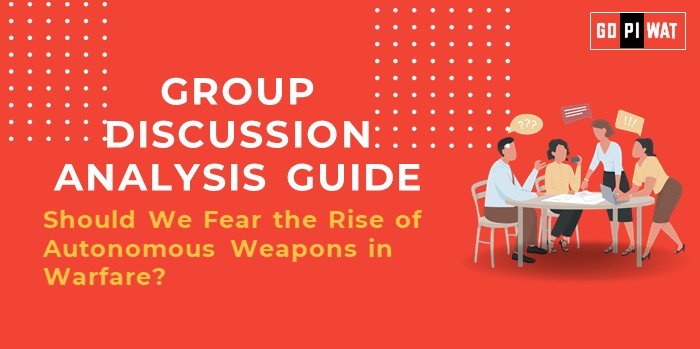📋 Group Discussion Analysis Guide
🤖 Topic: Should We Fear the Rise of Autonomous Weapons in Warfare?
🌐 Introduction
Autonomous weapons are at the forefront of technological evolution in warfare, raising questions about ethical, legal, and strategic implications. As artificial intelligence (AI) continues to advance, nations are rapidly integrating these systems into their military arsenals, prompting global debates on accountability, misuse, and the morality of delegating life-and-death decisions to machines.
📊 Quick Facts & Key Statistics
- 💰 AI Weaponry Spending: Projected to reach $632 billion by 2028, reflecting significant investment in AI-centric military systems.
- 🚁 Autonomous Drones: China’s unveiling of robot dogs equipped with machine guns demonstrates the rapid advancement of unmanned combat systems.
- 📜 Regulatory Landscape: UN Secretary-General has called for prohibitions on autonomous systems that violate international humanitarian law.
- 📣 Public Sentiment: Attitudes toward lethal autonomous weapons (LAWS) vary widely, shaped by ethical concerns over the morality of automated decision-making in warfare.
🤝 Stakeholders and Their Roles
- 🏛️ Governments: Develop and regulate autonomous weaponry; major players include China, the U.S., and Russia.
- 🏢 Tech Companies: Innovate and produce AI-driven combat systems.
- 🌍 International Organizations: Advocate for treaties and enforce compliance with international humanitarian laws.
- 👥 Civil Society: Campaigns like “Stop Killer Robots” push for outright bans or stringent regulation.
- 🪖 Military: Implement autonomous systems to enhance combat precision and efficiency.
🏆 Achievements and Challenges
- Achievements:
- ✅ Enhanced Precision: Autonomous systems like drones and robot dogs reduce human error, making combat operations more efficient.
- 🛡️ Reduced Human Risk: Deploying machines in high-risk scenarios limits troop casualties.
- ⚡ Faster Response Times: AI systems operate at unparalleled speeds, processing data and responding in real-time.
- Challenges:
- ⚖️ Ethical Issues: Delegating life-and-death decisions to machines raises profound moral concerns.
- 💣 Global Arms Race: Unchecked AI weapon development risks destabilizing international security.
- 📜 Regulatory Gaps: Current treaties are insufficient to manage the rapid evolution of autonomous weapons.
💡 Effective Discussion Approaches
- Ethical Opening: “Should machines decide the fate of human lives in warfare?”
- Regulatory Focus: “The lack of robust international treaties governing autonomous weapons is alarming.”
- Technological Context: “As AI spending on defense approaches $632 billion by 2028, what are the long-term implications for global peace?”
🔍 Strategic Analysis of Strengths & Weaknesses
- Strengths:
- 🎯 Enhanced combat precision.
- 🛡️ Minimizes troop exposure to danger.
- Weaknesses:
- ⚖️ Ethical and accountability concerns.
- ⚙️ Risk of malfunction or misuse.
- Opportunities:
- 🤝 Development of international regulations.
- 💡 Promotion of responsible AI use.
- Threats:
- 💥 Accelerating arms race.
- 🕵️ Unauthorized proliferation to rogue entities.
📄 Structured Arguments for Discussion
- ✅ Supporting Stance: “Autonomous weapons enhance military efficiency and reduce human casualties.”
- ❌ Opposing Stance: “The absence of human judgment in autonomous systems undermines ethical warfare principles.”
- ⚖️ Balanced Perspective: “While autonomous weapons offer operational advantages, they must be governed by strict ethical and legal frameworks.”
📚 Connecting with B-School Applications
- 💼 Real-World Applications: Analyze the intersection of AI ethics and international business policy in defense industries.
- 📝 Sample Interview Questions:
- “What ethical challenges arise from using AI in military operations?”
- “How should businesses developing autonomous systems address accountability?”
- 💡 Insights for Students:
- Engage with AI ethics and regulatory debates for leadership roles.
- Study the global implications of AI-driven strategies.


